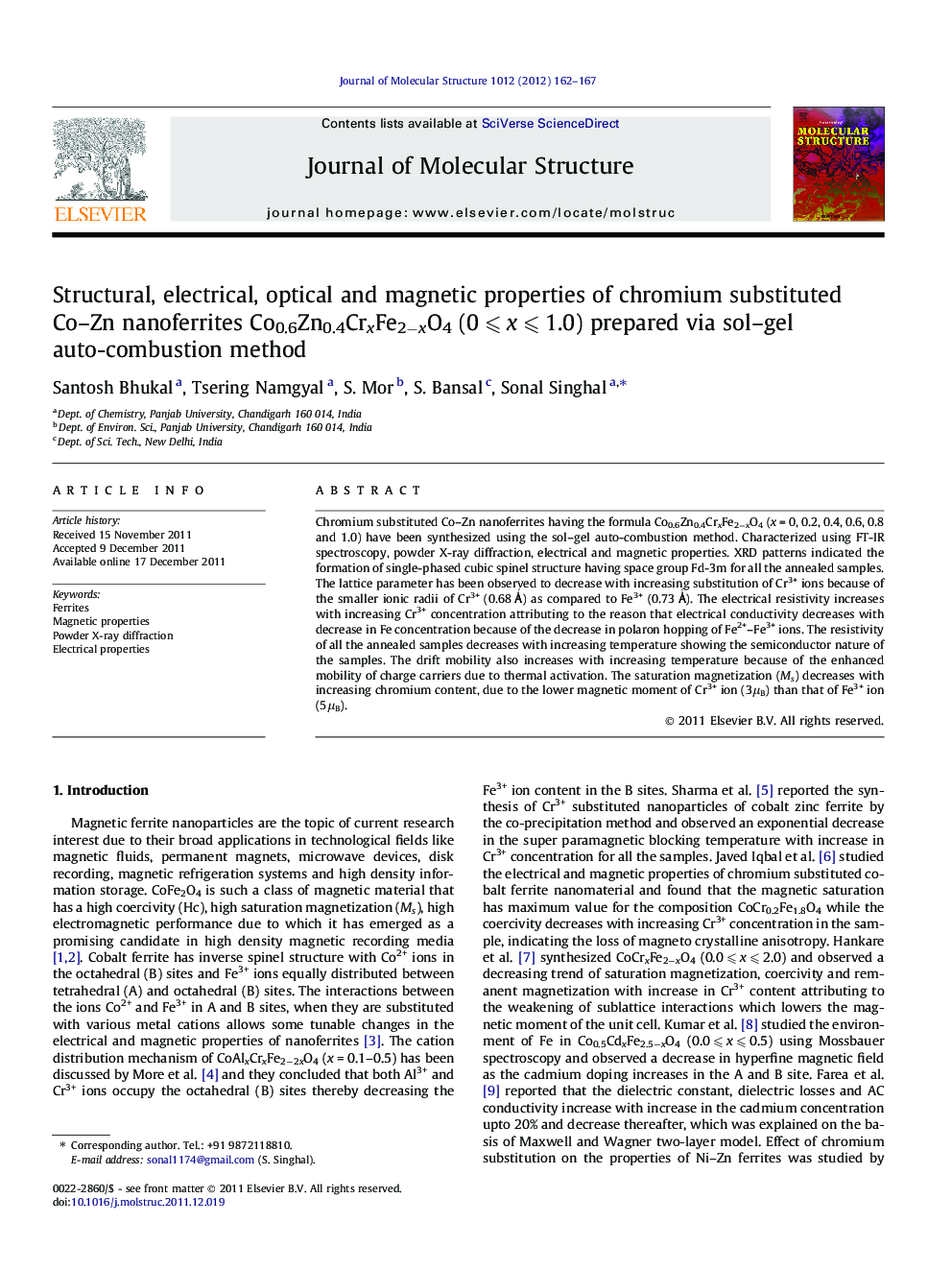| Article ID | Journal | Published Year | Pages | File Type |
|---|---|---|---|---|
| 1405754 | Journal of Molecular Structure | 2012 | 6 Pages |
Chromium substituted Co–Zn nanoferrites having the formula Co0.6Zn0.4CrxFe2−xO4 (x = 0, 0.2, 0.4, 0.6, 0.8 and 1.0) have been synthesized using the sol–gel auto-combustion method. Characterized using FT-IR spectroscopy, powder X-ray diffraction, electrical and magnetic properties. XRD patterns indicated the formation of single-phased cubic spinel structure having space group Fd-3m for all the annealed samples. The lattice parameter has been observed to decrease with increasing substitution of Cr3+ ions because of the smaller ionic radii of Cr3+ (0.68 Ǻ) as compared to Fe3+ (0.73 Ǻ). The electrical resistivity increases with increasing Cr3+ concentration attributing to the reason that electrical conductivity decreases with decrease in Fe concentration because of the decrease in polaron hopping of Fe2+–Fe3+ ions. The resistivity of all the annealed samples decreases with increasing temperature showing the semiconductor nature of the samples. The drift mobility also increases with increasing temperature because of the enhanced mobility of charge carriers due to thermal activation. The saturation magnetization (Ms) decreases with increasing chromium content, due to the lower magnetic moment of Cr3+ ion (3μB) than that of Fe3+ ion (5μB).
► CoZn nanoferrites have been extensively studied because of their many industrial applications. ► Cr has been found to enhance the density, so that it can be used in high density magnetic recording media. ► Chromium doping reduces the saturation magnetization, so that it can be utilized in materials with low magnetization. ► The substitution of Cr leads to enhance the DC resistivity for its utility in high resistive materials.
